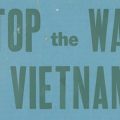How to Tell the Thanksgiving Story on Its 400th Anniversary
Scholars are unraveling the myths surrounding the 1621 feast, which found the Pilgrims and the Wampanoag cementing a newly established alliance.

This 1925 painting depicts an idealized version of an early Thanksgiving celebration in Plymouth. Public domain via Wikimedia Commons
If not for a few lines written by English colonist Edward Winslow, the uniquely American holiday of Thanksgiving might never have made it to the dining room table. A celebration of family, food and football, the tradition of a festive, harvest-time meal evolved from a letter penned by the esteemed settler about an obscure event held in the fall of 1621 at Plymouth Colony in what is now Massachusetts:
Our harvest being gotten in, our governor sent four men on fowling, that so we might after have a special manner rejoice together, after we had gathered the fruits of our labors; they four in one day killed as much fowl, as with a little help beside, served the Company almost a week, at which time amongst other Recreations, we exercised our Arms, many of the Indians coming amongst us, and amongst the rest their greatest king Massasoit, with some ninety men, whom for three days we entertained and feasted, and they went out and killed five Deer, which they brought to the Plantation and bestowed on our Governor, and upon the Captain and others.
Four hundred years later, the so-called first Thanksgiving is undergoing a reassessment. Museums and historic sites in Plymouth and around the country are telling a more nuanced story about the origins of the holiday—one that goes far beyond the lasting legend of smiling Pilgrims and Wampanoag people happily enjoying a big meal together.
Instead of perpetuating this myth, institutions like Plymouth’s Pilgrim Hall Museum and Plimoth Patuxet Museums (formerly Plimoth Plantation) are acknowledging just how little information about the gathering survives, in addition to exploring the layered, devastating ramifications of the ostensibly festive feast. The new dialogue more carefully examines the complicated relationship between early English settlers and the Wampanoag, who’d lived in the coastal community they called Patuxet for some 10,000 years by the time of the three-day celebration—probably held in late September or early October, after the crops were brought in.
“It wasn’t even called Thanksgiving back then,” says Darius Coombs, cultural and outreach coordinator for the Cape Cod–based Mashpee Wampanoag Tribe. “The Pilgrims had a large harvest that first year. So they have a feast. [Wampanoag leader Massasoit, or Ousamequin] shows up with about 90 of his men, and they bring five deer with them. They never ever mention turkey at that feast.”
Indeed, Winslow does not specifically call attention to this now-favored fowl. Though Plymouth Colony Governor William Bradford mentions a “great store of wild Turkies” in his similarly brief account of the bounty to be had that fall, neither references “thanks” or “Thanksgiving” in their writings.
Darius’ sister-in-law, historian and author Linda Coombs, is a member of the Wampanoag and the program director at the Aquinnah Cultural Center on Martha’s Vineyard. She’s quick to point out the lack of context surrounding what Americans celebrate today versus what happened 400 years ago.
“That’s all part of the mythology,” she says. “It was a onetime event. In the written record, there’s just a single paragraph that describes it. When I worked at Plimoth Plantation, we referred to it as the 1621 harvest feast.”
/https://tf-cmsv2-smithsonianmag-media.s3.amazonaws.com/filer_public/d4/d5/d4d51526-4122-41fa-a0d2-68952e2ccc05/thanksgiving-brownscombe.jpeg)
In 1620, a small group of English separatists packed up and headedfor the New World in search of religious freedom. Calling themselves “Saints” (the term “Pilgrims” wouldn’t be used to describe the settlers for another 200 years), they headed to what is now Delaware but landed in Plymouth in December after being blown off course by storms. The colonists first encountered the peaceful yet cautious Wampanoag the following spring.
At the time, the two disparate groups were attempting to find common ground. In April 1621, both had signed a treaty pledging to come to the aid of the other in case of attack. After losing nearly half of their settlers to sickness during their first winter in America, the English were teetering on extinction. The Wampanoag weren’t far from that reality themselves: Between 1616 and 1619, diseases introduced by European colonizers killed up to 90 percent of New England’s Native population in an epidemic now referred to as the Great Dying. Greatly weakened, the tribe also needed help fending off incursions from the Narragansett, a rival Native group.
That fall of 1621, the feast’s wary attendees were still learning about each other, says Donna Curtin, executive director of Pilgrim Hall, America’s oldest continuously operated public museum.
“These two groups very recently formed an alliance and are still getting acquainted with each other,” she explains. “You have to look at this with diplomatic overtones. In today’s Thanksgiving tradition, most people really don’t look at that aspect of it. This was a way to cement this very fresh alliance between the English and … the leader of the many tribal elements [Massasoit] represented.”
/https://tf-cmsv2-smithsonianmag-media.s3.amazonaws.com/filer_public/6a/d4/6ad448ad-a6ad-430a-90ad-27e6c536bdb1/wampanoag2.jpeg)
Because it was held outdoors, Tom Begley, a historian at Plimoth Patuxet Museums, likens the gathering to a political potluck picnic. Communication was difficult, as only Tisquantum—remembered today as Squanto—and a few other Native American guests spoke English and could act as translators.
“It was a diplomatic event between these two communities,” he says. “Despite the language barrier, it’s still pretty interesting that they were gathering together for three days. We always talk about how the relationship between the Indigenous people and settlers changed over time, and this is one of the earliest examples of relationship building.”
While there is little doubt that the English and the Wampanoag shared a meal together, historians continue to debate exactly how the meeting came to be. Some believe it was an accidental assemblage, that the Wampanoag stumbled upon the Pilgrims as they prepared to feast. Darius doubts that.
“They had to be invited,” he says. “To get that many men together and organized and travel to Plymouth was a big deal. [Massasoit] was from Pokanoket, which was 40 miles away in Rhode Island today. That was a two-day walk back then. He represented about 70 different communities of Wampanoag.”
/https://tf-cmsv2-smithsonianmag-media.s3.amazonaws.com/filer_public/84/5a/845a9589-4bbe-4c15-8645-f9b84405f9a1/11_1.jpg)
Another question whose answer is lost to time centers on women. Were they at this first feast? If so, were children in attendance, too? Neither appears in the historical record, but Curtin feels certain that both were there.
“Many English accounts of historical events recorded by men leave women out of the picture altogether,” she says. “Yet we know they were there. And the men were particularly likely to erase the presence of Native women. So when Winslow writes that Massasoit shows up with 90 men, that does not mean that other members of the community were not present.”
Linda says it’s possible that Wampanoag women were in Plymouth that day. Women were—and continue to be—central figures in Native culture, often taking on important roles in leadership and spiritual ceremonies. For them not to be there, she says, would have been unusual.
“The English were known to be disdainful of women,” Linda adds. “They are not mentioned in the passage by Winslow, which is very short. But an educated guess makes us think that at least the wives of some of the [Wampanoag] leaders were there.”
While that first feast was likely festive, what happened after it adds a darker tone to the holiday for many Native Americans, some of whom observe Thanksgiving as a National Day of Mourning, an annual commemoration that began in 1970.
“It opened the floodgates with all kinds of people coming over,” Darius says. “So the Mayflower becomes a symbol of European establishment. After that comes colonization, Christianity, cultural genocide, servitude. We don’t blame the Pilgrims, but they set it up so it could happen.”
/https://tf-cmsv2-smithsonianmag-media.s3.amazonaws.com/filer_public/c4/fd/c4fd8aca-dc4b-452f-ab17-71db06e7cb10/a01a9295-7158-4f10-a930-17c921864263.jpeg)
On Thanksgiving, Linda usually attends National Day of Mourning ceremonies held in Plymouth. She might cook a turkey but often times doesn’t—not so much as a statement against the holiday but as a practical choice reflecting the fact that she lives alone. “It’s too much food,” she says.
Linda thinks the idea of Americans gathering with their families is important. She just wants them to realize that the holiday they are celebrating came at a price
“People coming together as families and having a meal—that’s wonderful,” she says. “However, we would ask that people also remember how it is that they came to be able to do this. It’s because land was taken from us so they could live here. Everything was done to annihilate our culture and people. If they think that’s too dramatic, then they don’t understand the history.”
Setting the story straight is an ongoing process unfolding at museums and historical sites across the country. In “Upending 1620: Where Do We Begin?” at the Smithsonian’s National Museum of American History, curators reconsider the Thanksgiving narrative by exposing powerful, evolving myths about early encounters between the Wampanoag and English colonists.
“Emphasizing [the first Thanksgiving], hosted by polite Pilgrims in inaccurately fancy clothes, pasted over centuries of violence committed against Native Americans as the nation expanded west,” reads a label in the exhibit.
Separately, the Smithsonian Channel revisited the first feast this year with a new documentary filmed at Plimoth Patuxet. Titled “Behind the Holiday: Thanksgiving,” the special demonstrates how “the true story of [the gathering] bears little resemblance to how we celebrate today.” (Check SmithsonianChannel.com for more information about how to watch the program, which will be reaired on Wednesday at 10 a.m. Eastern time and Friday at 11 p.m. Eastern.)
In the past, both Pilgrim Hall and Plimoth Patuxet have featured exhibitions about the true origins of Thanksgiving. The latter has a new display that digs deep into the roots of the tradition: “We Gather Together: Thanksgiving, Gratitude and the Making of an American Holiday.”
In addition to this show, Plimoth Patuxet is hosting a series of events explaining what happened in 1621, including talks by interpreters dressed as Pilgrims and Wampanoag and cooking demonstrations showing what participants really ate 400 years ago.
“We provide the context about what is happening behind those relationships in 1621, as well as the roots and evolution of the holiday,” says Begley. “We’re also talking about gratitude. In 1621, these two groups who couldn’t speak the same language came together in Patuxet-Plymouth for three days and were working together on diplomacy and forging an alliance. For that moment, it was working. Those people in 1621 couldn’t predict what would happen in the future. We look at that moment as the inspiration for what becomes the national holiday.”
Pilgrim Hall is also open on Thanksgiving Day. Curtin will lead tours discussing the original meal and what it means today.
“We look back and continue to refresh our understanding of this event,” she says. “Why did these folks get together? What did it all mean? It is an international event because of the English and Wampanoag, so we need to reflect that.”
Despite the limited written record, historians continue to study the origins of this important national holiday to gain a clearer picture of what really happened four centuries ago. Providing an accurate depiction of the circumstances that led to the first feast and the events that followed it are critical to understanding why Americans give thanks today.
As Winslow concluded in his brief statement about that day, “[A]lthough it be not always so plentiful as it was at this time with us, yet by the goodness of God, we are so far from want that we often wish you partakers of our plenty.”
/https://tf-cmsv2-smithsonianmag-media.s3.amazonaws.com/accounts/headshot/IMG-0384.JPG)
David Kindy is a daily correspondent for Smithsonian. He is also a journalist, freelance writer and book reviewer who lives in Plymouth, Massachusetts. He writes about history, culture and other topics for Air & Space, Military History, World War II, Vietnam, Aviation History, Providence Journal and other publications and websites.
This post was originally published by Smithsonian. Copyright 2021 Smithsonian Institution. Reprinted with permission from Smithsonian Enterprises. All rights reserved. Reproduction in any medium is strictly prohibited without permission from Smithsonian Institution.
Posted: 25 November 2021







